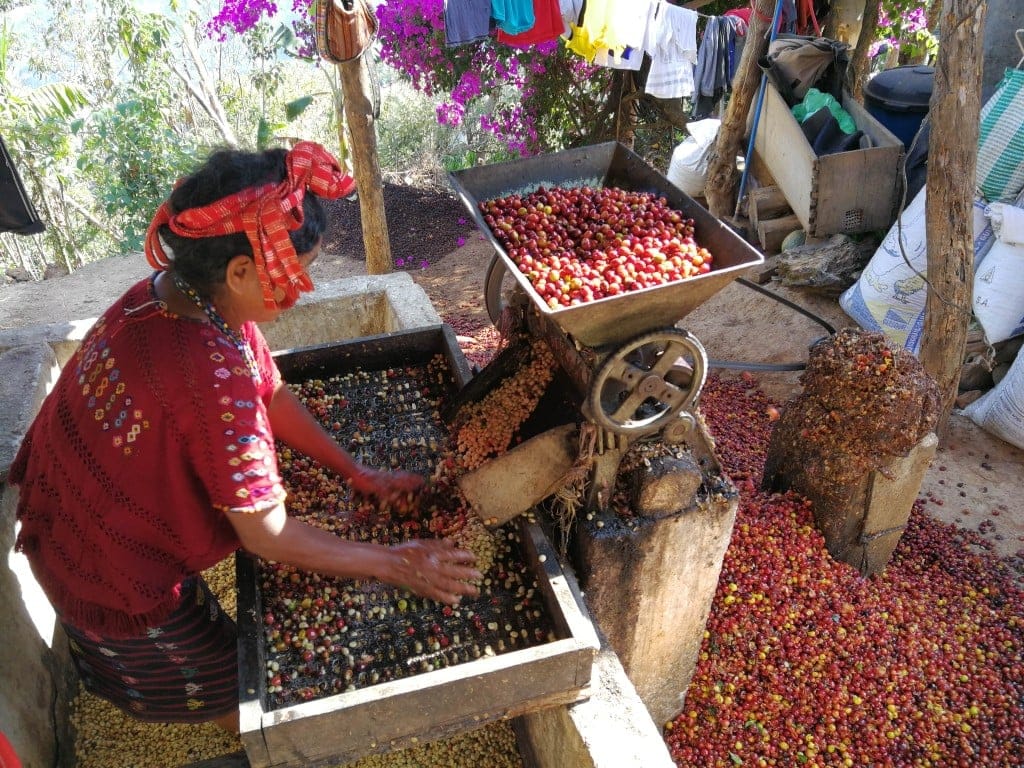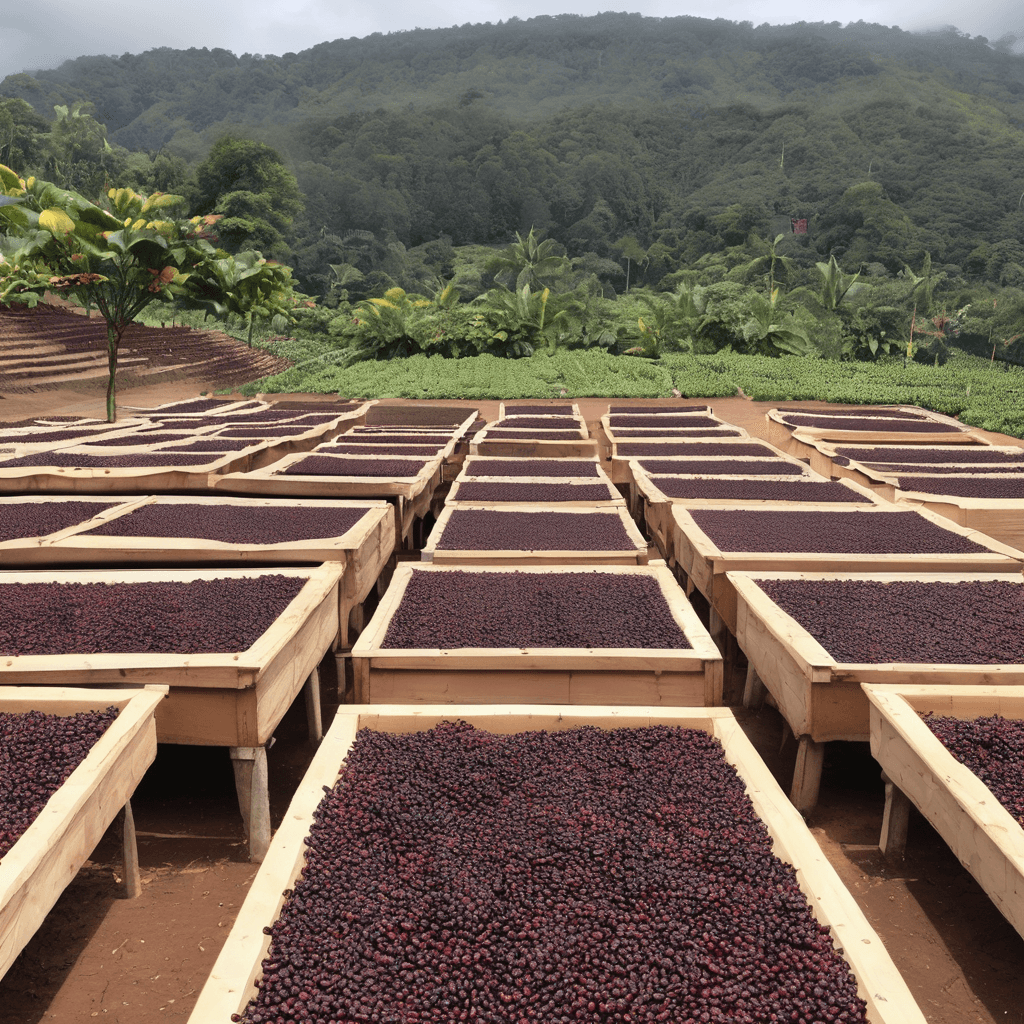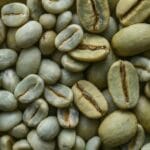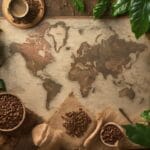We’ve explored the coffee family tree and met its star players, Arabica and Robusta. Now, let’s dive into the fascinating transformation from coffee cherry to the bean we grind and brew. This stage, known as processing, is a crucial step that significantly impacts the final flavor of your cup.
The Journey Begins: From Branch to Processing
Coffee cherries, those vibrant red (or sometimes yellow) fruits, hold the treasure within: the coffee beans. Once ripe, these cherries are carefully harvested, often by hand. Then, the journey to processing begins.
The Three Musketeers of Coffee Processing
There are three primary methods for processing coffee cherries:
- Washed (Wet) Process: This method involves removing the cherry’s outer layers (skin and pulp) before drying. The beans are then fermented and washed, resulting in a cleaner, brighter cup with pronounced acidity.
- Natural (Dry) Process: In this method, the entire cherry is dried, often on raised beds or patios. This process imparts fruity and sweet flavors to the beans, resulting in a fuller body and a more intense cup.
- Honey Process: A hybrid approach where some of the fruit pulp is left on the bean during drying. This method creates a unique balance of sweetness, body, and acidity, often with a syrupy mouthfeel.
Why Processing Matters
The chosen processing method significantly influences the final flavor profile of the coffee. Washed coffees tend to be cleaner and brighter, while natural coffees offer a more intense, fruit-forward experience. Honey process coffees fall somewhere in between, with a unique balance of sweetness and acidity.

Diving Deeper into the Washed Process
- Pulping: The outer skin and pulp of the coffee cherry are removed using a machine called a depulper.
- Fermentation: The beans are then placed in fermentation tanks, where naturally occurring enzymes break down the sugars and pectins in the remaining mucilage. This process can last anywhere from 12 to 48 hours, depending on factors like temperature and the desired flavor profile.
- Washing: After fermentation, the beans are thoroughly washed with clean water to remove any remaining mucilage.
- Drying: The washed beans are then spread out on raised beds or patios to dry in the sun. This process can take several days or even weeks, depending on the weather conditions. The beans are raked and turned regularly to ensure even drying.
A Closer Look at the Natural Process
- Drying: In the natural process, the whole coffee cherries are spread out on raised beds or patios to dry in the sun. This can take several weeks, as the cherries slowly dehydrate and the sugars within them begin to ferment.
- Hulling: Once the cherries are completely dry, they are passed through a hulling machine to remove the dried skin and fruit, revealing the beans inside.
Exploring the Honey Process
- Depulping: The outer skin of the coffee cherry is removed, but some or all of the sweet mucilage layer is left on the bean.
- Drying: The beans, with their mucilage coating, are then dried on raised beds or patios. The drying time will vary depending on the amount of mucilage left on the beans and the desired flavor profile.
- Variations: There are different types of honey processing, often named after colors (yellow, red, black) to indicate the amount of mucilage left on the bean and the resulting flavor profile.
Beyond the Basics: Experimental Processing
Coffee producers are constantly experimenting with new and innovative processing methods, pushing the boundaries of flavor. These experimental techniques can involve anaerobic fermentation, carbonic maceration, or even aging the beans in barrels. These methods often result in unique and complex flavor profiles, offering exciting new experiences for coffee enthusiasts.
Processing and Terroir
The processing method also interacts with the coffee’s terroir, the unique environmental factors that influence its flavor. The same beans processed differently can yield vastly different cups. This interplay between processing and terroir highlights the complexity and diversity of the coffee world.
Unveiling the Bean: Hulling and Sorting
After drying, the beans undergo hulling to remove the remaining layers (parchment and silverskin). The green beans are then meticulously sorted by size, density, and quality to ensure consistency.
Your Role in the Processing Story
As a coffee enthusiast, understanding processing empowers you to make informed choices. When you see labels mentioning “washed,” “natural,” or “honey,” you’ll have a better idea of the flavor adventure that awaits.
Up Next: Seed 102: V. Bean Belt Adventures – Taste the World in Your Coffee Cup
Now that we’ve explored the journey from cherry to bean, let’s embark on a global adventure to discover the diverse flavors of the Bean Belt, the regions where coffee thrives.





No Comment! Be the first one.